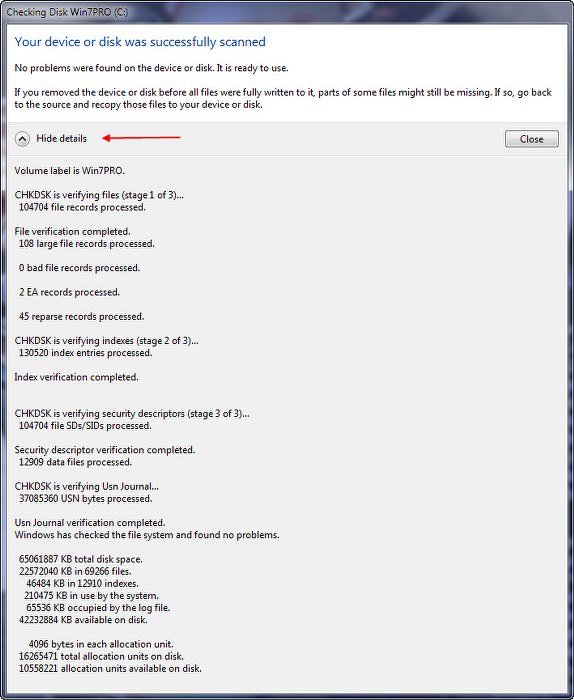From time to time, it is a good practice to check your hard drive (hard disk) for errors using a tool built into Windows called CHKDSK (for Check Disk). It is important that you keep a watch on your Hard Disk health.
How do hard disk errors happen? Other than the CD/DVD drive in your Windows PC or laptop, the hard disk is the only component with moving parts, spinning at speeds up to 7200 revolutions per minute whether you are doing anything on your computer or not. Due to this alone, wear & tear takes place and file errors or even bad sectors on the physical disk itself can occur. Power surges, bumping or dropping the PC (particularly laptops) can cause errors as well.
Check Hard Disk for Errors, Health, Bad Sectors in Windows
What can CHKDSK do? It can look for cluster errors as well as file problems. Often, you may not realize that your hard disk has an error until you run CHKDSK or another program. For instance, I did not know that my laptop’s hard disk had an error until I attempted to create a disk image with Acronis True Image. It warned me that the drive had errors that needed to be fixed before image creation could take place.
Let’s run CHKDSK. There are actually two ways to do this, a graphical and a command-line version. To run the graphical version, click Start>Computer and right-click the drive to check (usually C:) then click Properties. Go to the Tools tab. Click the Check Now button.
In the window that appears, two options are available:
- Automatically Fix File System Errors (checked by default), and
- Scan for and attempt recovery of bad sectors
For the first time, leave box boxes unchecked and click Start and wait for a report. Click on the Details arrow to get the full report.

If no errors are found, that’s great! If however, errors were discovered, then re-run CHKDSK with ‘Automatically fix file system errors’ checked. Note that if you attempt to run this on your Windows partition, it will tell you that the file system is in use, and do you want to check for errors the next time you start your computer? Click ‘Schedule disk check’ and then the next time you restart your Windows PC the CHKDSK utility will run before Windows starts up. When it finishes, it will display an onscreen report.
As for the #2 option above, this will cause CHKDSK to perform a sector-by-sector surface check of the hard disk, which will take some time. If Check Disk finds a bad sector, it automatically attempts to recover any information stored in the sector and it marks the sector as defective so that no information can be stored there in the future. This is what occurred with my hard disk; there is a 4KB ‘bad sector’ that Windows avoids using, so I can use tools like Acronis True Image with no problems.
Take a look at CHKDSK soon and keep your data safe from errors.
Guest Post By: James Fisher, MVP.
Go here to learn about Disk Error Checking in Windows. and here if you want to cancel a scheduled ChkDsk.